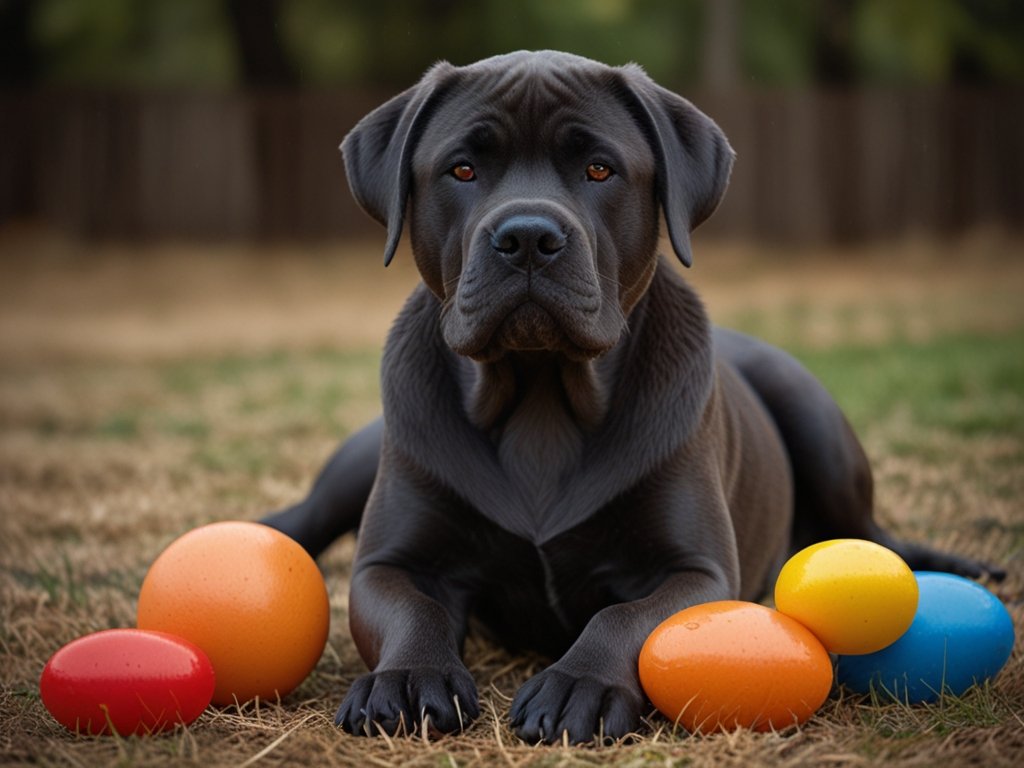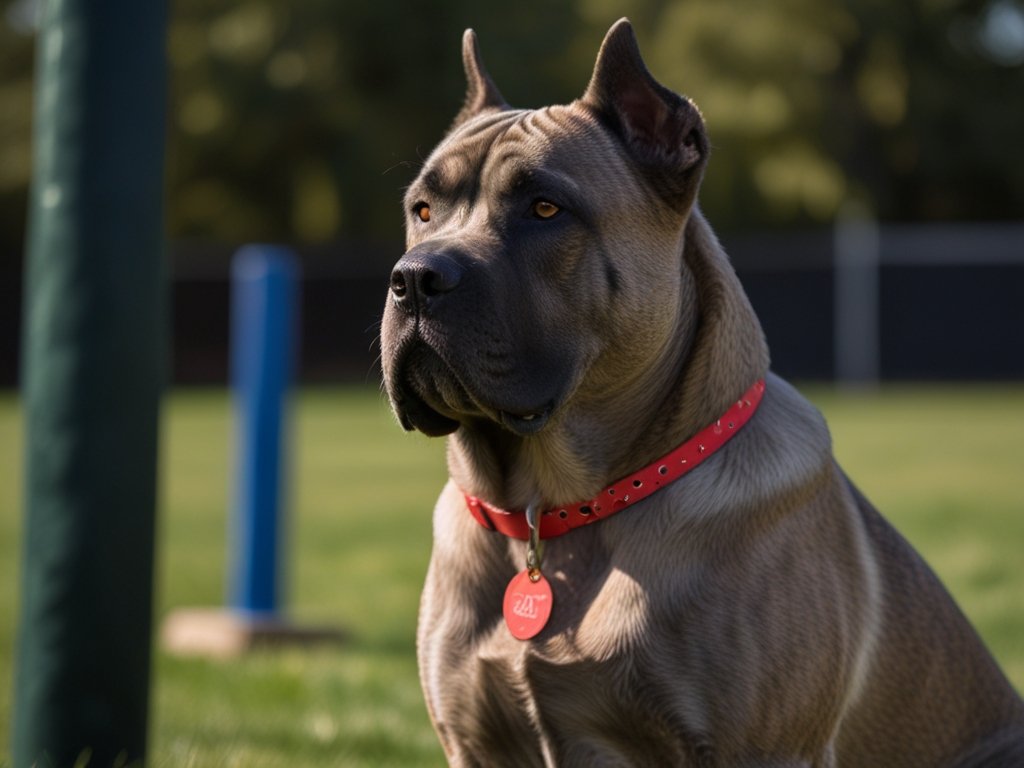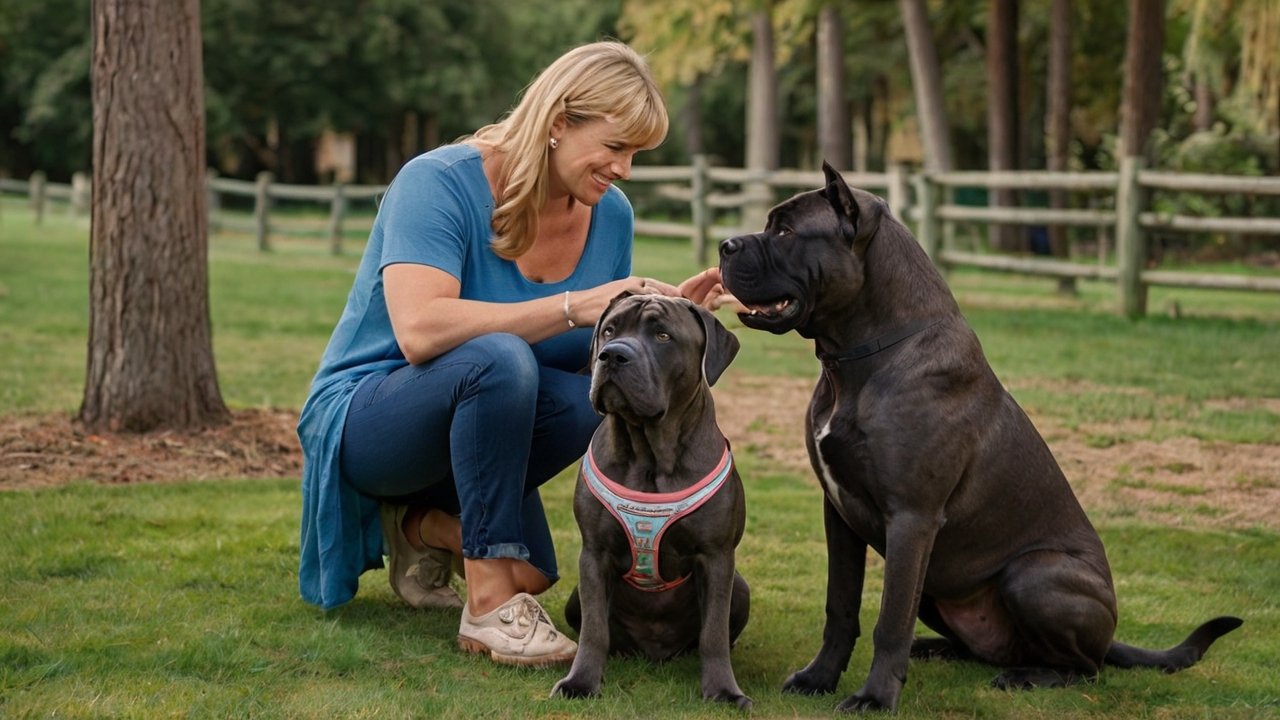Are you considering welcoming another majestic Cane Corso into your home? As a veterinarian and experienced Cane Corso breeder, I'm thrilled to guide you through this exciting journey. Introducing a second Cane Corso can be a rewarding experience, but it requires careful planning and execution. In this comprehensive guide, we'll explore everything you need to know to ensure a smooth transition for your current furry friend and your new addition.
- Introducing a Second Cane Corso: Step-by-Step Guide
- Understanding the Unique Cane Corso Temperament
- 5 Key Steps to Introduce a Second Cane Corso
- Preparing Your Home for a Second Cane Corso
- The Introduction Process: A Step-by-Step Guide
- Establishing a New Routine for Your Cane Corso Duo
- Overcoming Common Challenges
- Long-term Success: Keeping Your Cane Corsos Happy and Healthy
- Frequently Asked Questions
- Conclusion: A Harmonious Multi-Cane Corso Household
Introducing a Second Cane Corso: Step-by-Step Guide
Preparation
- Assess current Cane Corso's behavior
- Create separate spaces for each dog
- Double up on resources (bowls, toys)
First Meeting
- Choose neutral location
- Keep both dogs on leashes
- Watch for positive body language
Home Introduction
- Enter home separately
- Allow supervised exploration
- Use crates and baby gates
Establishing Routine
- Set consistent schedules
- Provide balanced attention
- Conduct individual and joint training
Ongoing Management
- Monitor interactions closely
- Continue socialization
- Address any issues promptly
Understanding the Unique Cane Corso Temperament

Before we dive into the introduction process, let's refresh our knowledge of the Cane Corso breed:
The Cane Corso Personality: Loyal Guardians with a Heart of Gold
- Protective Nature: Cane Corsos are natural guardians, fiercely loyal to their families.
- Intelligence: These dogs are highly intelligent, requiring mental stimulation and consistent training.
- Social Needs: Early socialization is crucial for developing well-rounded Cane Corsos.
Physical Traits: Power and Grace Combined
- Impressive Stature: Adult Cane Corsos can weigh up to 110 pounds, with males standing 25-27.5 inches tall at the shoulder.
- Energy Levels: Despite their size, Cane Corsos are energetic and require regular exercise.
- Exercise Requirements: Plan for at least 1-2 hours of daily physical activity to keep your Cane Corso healthy and happy.
5 Key Steps to Introduce a Second Cane Corso
Preparing Your Home for a Second Cane Corso

Assessing Your Current Cane Corso's Behavior
Before bringing a new dog into the mix, it's essential to evaluate your existing Cane Corso's temperament:
- Social Skills: How well does your dog interact with other dogs?
- Resource Guarding: Does your Cane Corso show possessive behavior over food, toys, or attention?
- Training Level: Is your current dog well-trained and responsive to commands?
Pro Tip: If you notice any behavioral issues with your current Cane Corso, address them before introducing a new dog. This will set you up for success and create a more harmonious household.
Creating a Cane Corso-Friendly Environment
Preparing your home for a second Cane Corso is crucial. Here's what you need to do:
- Designate Separate Spaces:
- Create individual "safe zones" for each dog
- Provide separate crates or beds in different areas of the house
- Double Up on Resources:
- Ensure you have enough food and water bowls
- Provide multiple toys to prevent resource guarding
- Set up separate feeding areas to avoid mealtime conflicts
- Puppy-Proof (Again!):
- Remove potential hazards, especially if introducing a Cane Corso puppy
- Secure trash cans and keep toxic substances out of reach
Remember: Cane Corsos are large, powerful dogs. Ensure your home and yard are secure to prevent escapes and keep both dogs safe.
The Introduction Process: A Step-by-Step Guide

Step 1: The First Meeting - Neutral Territory is Key
When it's time for your Cane Corsos to meet, follow these guidelines:
- Choose a neutral location (e.g., a quiet park) to prevent territorial behavior.
- Keep both dogs on leashes, with a handler for each dog.
- Allow them to see each other from a distance before approaching.
- Watch for positive body language:
- Relaxed posture
- Wagging tails
- Playful behavior
Red Flags to Watch For:
- Growling or snarling
- Raised hackles
- Stiff, tense body posture
If you notice these signs, separate the dogs calmly and try again another day.
Step 2: Bringing Your New Cane Corso Home
Once the initial meeting goes well, it's time to introduce your new Cane Corso to their forever home:
- Enter Separately: Bring the new dog in while your current Cane Corso is in the backyard or another room.
- Supervised Exploration: Allow the new dog to explore the house under your supervision.
- Scent Familiarization: Let each dog smell items belonging to the other to get used to their scent.
- Gradual Integration: Slowly bring the dogs together in the house, keeping them on leashes initially.
- Positive Reinforcement: Reward calm, friendly behavior with treats and praise.
Expert Insight: The integration process can take anywhere from a few days to several weeks. Be patient and never force interactions between your Cane Corsos.
Gender Dynamics in Cane Corso Introductions
When introducing a second Cane Corso, consider the gender of your existing dog. It is often recommended to adopt a Cane Corso of the opposite sex to your existing dog. This can help reduce territorial behavior and aggression, particularly in male dogs. However, successful pairings of same-sex Cane Corsos are possible with proper introduction and management.
Establishing a New Routine for Your Cane Corso Duo

Balanced Attention: The Key to Harmony
- Divide your time equally between both Cane Corsos to prevent jealousy.
- Engage in separate play sessions and training time with each dog.
- Avoid showing favoritism, even if one dog is needier than the other.
Training: Individual and Joint Sessions
- One-on-One Training:
- Continue individual training sessions with each Cane Corso.
- Focus on reinforcing obedience commands and good behavior.
- Joint Training:
- Gradually introduce joint training sessions to promote bonding.
- Practice commands like "sit" and "stay" with both dogs together.
- Reward good behavior and cooperation between the dogs.
Training Tip: Use the "Nothing in Life is Free" method, requiring both Cane Corsos to perform a command before receiving meals, treats, or attention.
Creating Safe Spaces
Utilize crates and baby gates to create safe spaces for both dogs. This allows them to get used to each other's presence without direct interaction, which can help alleviate stress and anxiety. Gradually increase their time together as they become more comfortable.
Overcoming Common Challenges

Dealing with Dominance Issues
Cane Corsos have strong personalities, and dominance issues may arise:
- Establish yourself as the pack leader through consistent training and rules.
- Intervene calmly but firmly if one dog becomes overly dominant.
- Consult a professional dog trainer if dominance issues persist or escalate.
Managing Resource Guarding
To prevent conflicts over food, toys, or attention:
- Feed your Cane Corsos in separate areas.
- Remove high-value toys when both dogs are together.
- Teach both dogs the "leave it" and "drop it" commands.
- Reward sharing and peaceful coexistence.
Long-term Success: Keeping Your Cane Corsos Happy and Healthy

Regular Exercise: A Tired Cane Corso is a Good Cane Corso
- Provide at least 1-2 hours of daily exercise for each dog.
- Engage in activities like:
- Long walks or jogs
- Fetch or tug-of-war games
- Swimming (if your Cane Corsos enjoy water)
Mental Stimulation: Keeping Brilliant Minds Busy
Cane Corsos are intelligent dogs that need mental challenges:
- Use puzzle toys and treat-dispensing games.
- Practice nose work or scent training.
- Teach new tricks and commands regularly.
Maintaining Individual Relationships
While your Cane Corsos may become best friends, it's crucial to maintain individual relationships:
- Spend one-on-one time with each dog daily.
- Celebrate their unique personalities and strengths.
- Take each Cane Corso on solo outings or adventures occasionally.
Ongoing Socialization
Continue socializing both Cane Corsos throughout their lives. Expose them to various environments, people, and other dogs to help them maintain good social skills. This is particularly important for the new addition to your family, especially if they are a puppy.
Frequently Asked Questions
To provide you with more comprehensive information about introducing a second Cane Corso and managing multiple dogs, we've compiled answers to some common questions:
Is it better to have two male Cane Corsos or a male and a female?
Generally, it's recommended to have a male and a female Cane Corso rather than two of the same sex. This combination often results in less competition and fewer dominance issues. However, successful pairings of same-sex Cane Corsos are possible with proper introduction and management. If you choose to have two dogs of the same sex, early socialization and training are crucial.
How can I prevent fights between my two Cane Corsos?
Preventing fights involves several strategies:
- Proper introduction and socialization from the start.
- Consistent training and establishing clear rules for both dogs.
- Providing enough resources (food, toys, attention) for both dogs to prevent competition.
- Supervising interactions, especially during the early stages of cohabitation.
- Recognizing and addressing signs of tension or aggression early.
- Maintaining a calm and positive environment in the home.
If fights do occur, seek professional help from a dog behaviorist experienced with large breeds.
What's the best age to introduce a second Cane Corso?
The ideal age depends on your current dog's temperament and training level. Generally, it's best to wait until your first Cane Corso is at least 1-2 years old and has received proper training and socialization. This ensures they have a stable temperament and good manners before introducing a new dog. If introducing a puppy, consider doing so when your adult dog is between 2-6 years old, as they'll have the maturity to handle a puppy's energy but still be young enough to adapt to the change.
Do Cane Corsos get along well with other dogs?
Cane Corsos can get along well with other dogs, but it largely depends on their individual temperament and socialization. Early and consistent socialization is key to ensuring your Cane Corso is comfortable and well-behaved around other dogs. While they may be naturally protective and sometimes wary of unfamiliar dogs, a well-socialized Cane Corso can form positive relationships with other canines, especially when introduced properly.
How do I know if my Cane Corso is dominant?
Signs of dominance in a Cane Corso may include:
- Pushing or bumping other dogs or people.
- Blocking pathways or doorways.
- Demanding attention or resources.
- Mounting behavior (not necessarily sexual).
- Refusing to move when asked.
- Growling or snapping when their perceived status is challenged.
If you notice these behaviors, it's important to address them through consistent training and by establishing yourself as the leader. In multi-dog households, some level of hierarchy is normal, but excessive dominance behaviors should be managed to prevent conflicts.
Remember, while these answers provide general guidance, each dog is unique. If you're experiencing specific issues with your Cane Corsos, it's always best to consult with a professional dog trainer or behaviorist who has experience with the breed.

Conclusion: A Harmonious Multi-Cane Corso Household
Introducing a second Cane Corso to your family is a journey filled with challenges and rewards. By following these expert tips and remaining patient and consistent, you can create a loving, balanced home for both of your magnificent Cane Corsos.
Remember, every dog is unique, and the process may take time. Trust your instincts, stay committed to positive reinforcement, and don't hesitate to seek professional help if needed. With proper planning, supervision, and training, you can successfully integrate a second Cane Corso into your family and enjoy the companionship of these loyal and majestic dogs.
Have you successfully introduced a second Cane Corso to your family? We'd love to hear your experiences and additional tips! Share your story in the comments below and join our community of passionate Cane Corso owners.
Ready to take the next step in your Cane Corso journey? Subscribe to our newsletter for exclusive tips, training advice, and updates on Cane Corso care and nutrition!
Learn more about Cane Corso training techniques


Leave a Reply